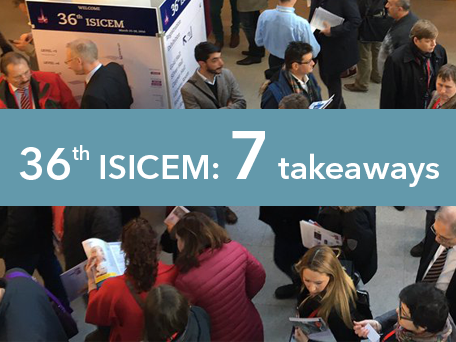 The plenary sessions at the 36th International Symposium on Intensive Care and Emergency Medicine (ISICEM) offered valuable clinical perspective in the areas of airway management and enteral feeding. If you weren’t able to be there, here were some of the notable takeaways.
The plenary sessions at the 36th International Symposium on Intensive Care and Emergency Medicine (ISICEM) offered valuable clinical perspective in the areas of airway management and enteral feeding. If you weren’t able to be there, here were some of the notable takeaways.
From the presentation by Dr. Paul Mayo1
- The learning curve for airway management is steep for U.S. intensivists. Dr. Paul Mayo emphasized that most intensivists in the U.S. come from a pulmonary or respiratory background, whereas, in Europe, most intensivists have a background in anesthesia. The baseline of airway management training is higher for intensivists with an anesthesiology background. This leads to a steep learning curve in airway management for most U.S. intensivists.
- Most urgent endotracheal intubations (UEIs) are for difficult airways. Dr. Mayo also shared that most UEIs in the ICU are classed as being performed for difficult airways because of factors including limited mouth opening, reduced neck extension, or comorbidities.
- Mortality for UEI has been reported to be as high as 2%. Dr. Mayo stressed that this makes UEI the most dangerous critical care procedure.
From the presentation by Professor Jaber2
- Difficult intubations are more common in the ICU than in the OR. Professor Jaber emphasized that 10-20% of intubations are difficult in the ICU compared to the 3-5% of intubations that are difficult in the OR. This leads to more complications for ICU patients.
- During a UEI, always oxygenate first, then call for help. Oxygenation takes priority over everything else.
- The MACOCHA score is now a part of the French difficult airway guidelines. During his presentation about difficult intubation in the ICU, Professor Jaber asserted, “All patients admitted in the ICU should have an evaluation of their airway.” With the help of a close colleague, Dr. De Jong, Professor Jaber has developed a new ICU-based UEI score called the MACOCHA Score, which has been accepted into the new French difficult airway guidelines.
From the presentation by Dr. Kenneth Christopher3
- Transpyloric feeding may reduce the incidence of aspiration pneumonia. “The biggest problem with delivering tube feed in our ICU is GRV,” shared Dr. Kenneth Christopher during his enteral feeding presentation. Because of the gastric residual volume (GRV) problem, his ICU’s biggest concern is the increased risk of aspiration pneumonia. He feels transpyloric feeding is the best way to prevent aspiration pneumonia in an ICU patient.
Interested in receiving industry news, product updates, and top takeaways from other meetings? Sign up for our email newsletter.
Drs. Mayo, Jaber, and Christopher are not paid consultants of Cook Medical.
1 Mayo P. Team approach to urgent endotracheal intubation. Presented at: 36th International Symposium on Intensive Care and Emergency Medicine (ISICEM); March 15-18, 2016; Brussels, BE.
2 Jaber S. Difficult intubation in the ICU. Presented at: 36th International Symposium on Intensive Care and Emergency Medicine (ISICEM); March 15-18, 2016; Brussels, BE.
3 Christopher K. How I optimize enteral feeding. Presented at: 36th International Symposium on Intensive Care and Emergency Medicine (ISICEM); March 15-18, 2016; Brussels, BE.
